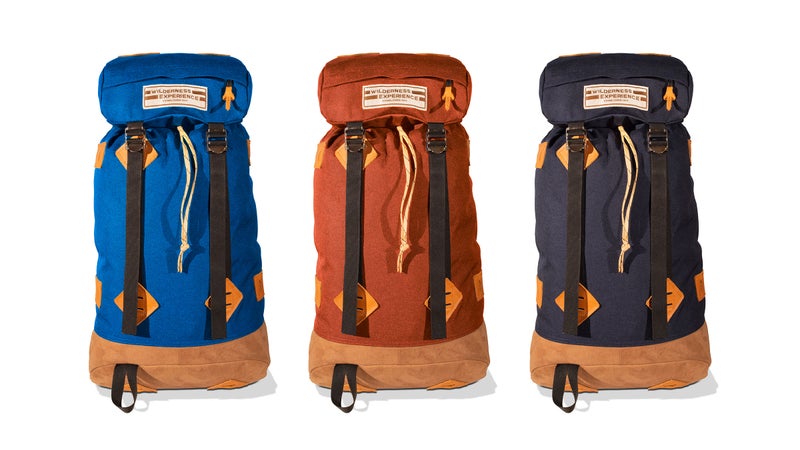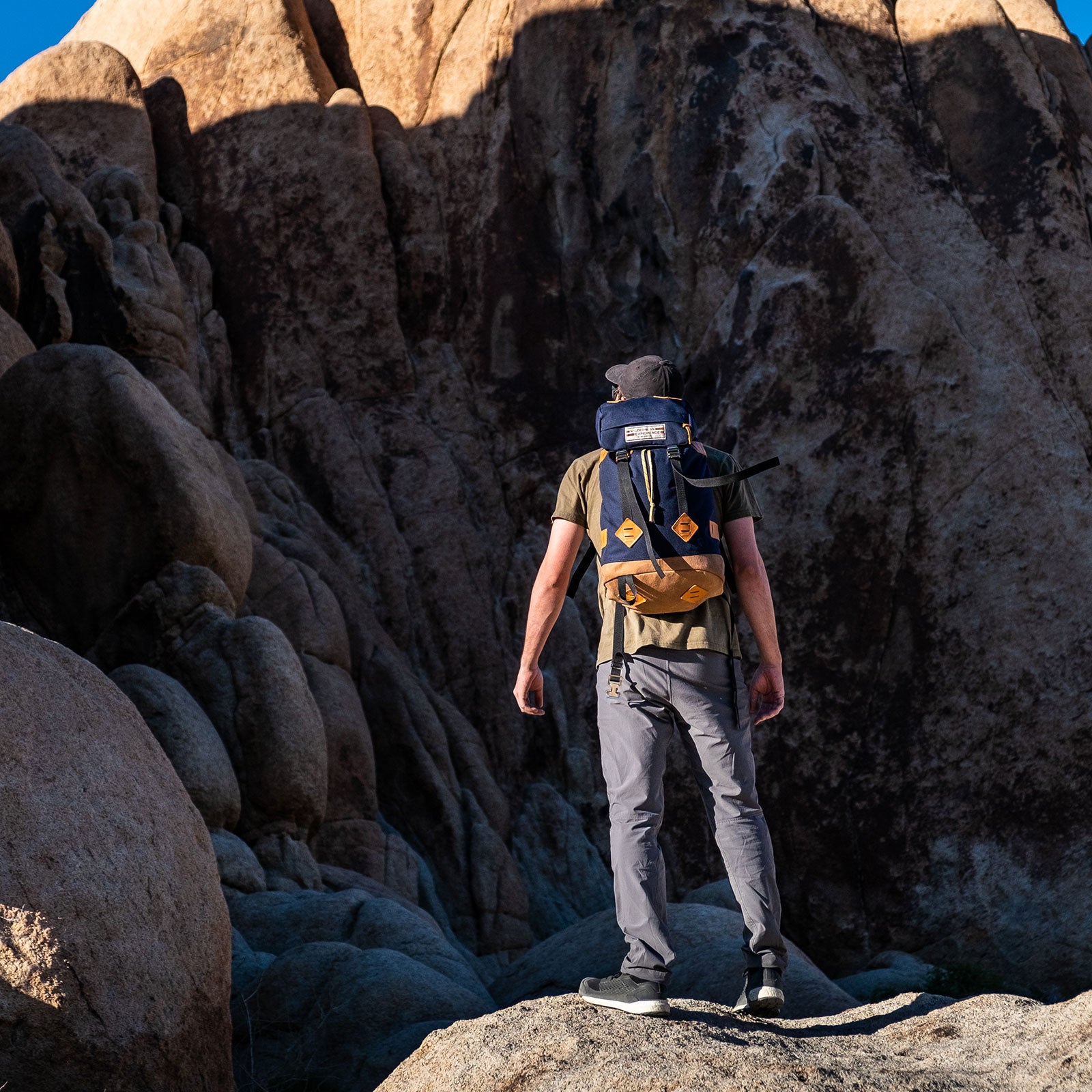Whether you know it or not, you’ve seen a Klettersack. The old-school drawstring pack,��with chunky metal��buckles, a flip-top lid, and slotted leather patches, is��like Converse sneakers: once the height of tech and��now considered retro in a cool, contemporary way that’s earned it��increasing popularity. Topo Designs describes as “classic.” and ��market theirs as “heritage.” But the design all��started with one company that you’ve probably never heard of: .��
Brothers Greg and Jim Thomsen founded the company��in the early seventies. For over ten years, it was��among the preeminent technical gear makers in the U.S., outfitting the likes of climbing icons��John Long and Jim Donini. In the eighties, the Thomsens sold the company to a larger corporation, and Wilderness Experience eventually died out. Decades later, the Klettersack design has remained its most enduring legacy.��Now, for a limited time, Jim Thomsen is bringing it back.
The Klettersack came about in the same fashion as many great gear innovations: the Thomsen brothers couldn’t find the equipment they wanted for climbing, so they began��making it��themselves. Jim had worked for Dick Kelty (who started his eponymous in 1952)��making and selling frame packs in the sixties. Greg was fresh off a climbing tour of Europe and Asia. Together, they knew exactly what kind of packs they wanted��for climbing Yosemite Valley’s big walls. They designed an entire line of��packs in a range of sizes, including multi-day frame models, but the Klettersack was by far the most popular item. It��had leather attachment points for webbing��to secure gear like ropes and��ice tools,��a sloped bottom to pull weight close to the back,��and a narrow cut that didn’t inhibit the wearer’s arm movements. Those specs are all common today, but at the time, no U.S. companies were doing anything like it.
“We decided that, since we made them, we might as well try to sell them,” says Jim. At the end of 1972, the brothers started with a few local retailers, “and it just sort of took off.” Soon��many of the country’s best climbers were sporting Wilderness Experience gear, which ultimately included apparel and tents.��“It went from us using old Army and Navy stuff in the early seventies,”��says Long in a promotional video, “to the late seventies, where things really are not that different than what they are today.”��Yvon Chouinard asked the brothers to make packs for his fledgling company, Chouinard Equipment (you probably know of the brand under its current name,��Patagonia).

A few years after they took their company public in 1981, both brothers moved on to pursue other ventures within the outdoor industry��and eventually sold the company to K2,��at which point it slowly began to��fizzle out.��In the decades since, the now iconic Klettersack silhouette has inspired several spin-off designs, like those mentioned above, and��found its way into the canon of classic—and now almost fashionable—outdoor gear.
It wasn’t until a Wilderness Experience reunion party a few years ago that Jim had the idea to bring back one of the company’s old designs. “All of us felt really bad that something we had worked on so long just disappeared,” he says. He renewed the Klettersack trademark and found suppliers to produce the Klettersack in the same materials and colors it was in 1974, down to the 1,000-denier Cordura. The Original Klettersack campaign last month��and has already raised more than $4,600 over its $20,000 goal.
For now it’s a limited run of just a few hundred,��available only through Kickstarter. Though��Jim says he’s already considering a few other relaunches. “It would be fun to make a 2020 version of [the Klettersack],” he says, using recycled fabrics, plastic buckles, and all of the other innovations that have come along in the last few decades. He’s also considering resurrecting��the company’s original geodesic dome tent. “I’ve gotten so many e-mails from people asking��for it,” he says.
Will we see the company itself rise from the ashes—a Wilderness Experience 2.0? “We gotta do at least a couple more [products],” Jim says. “And we’ll see where it goes from there.”


